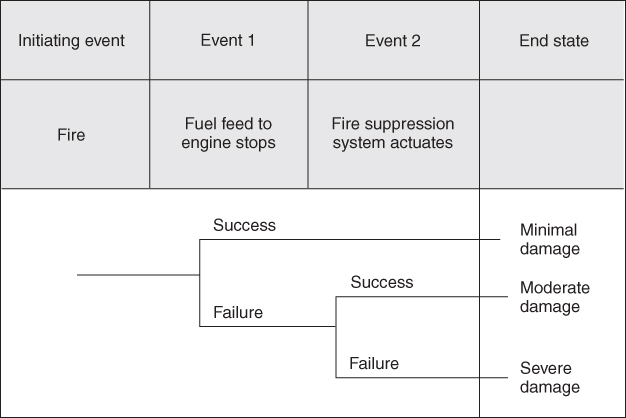18.3 Event Tree and Fault Tree Analysis
As discussed in Chapters 12 and 14, an event tree is a graphical representation of a series of possible events in an accident sequence (2). Using this approach assumes that as each event occurs there are only two outcomes, failure or success. A success ends the accident sequence and the postulated outcome is that the accident sequence was either terminated successfully or mitigated successfully. For instance, a fire starts in an engine. This is the initiating event. Then the automated system closes fuel feed. If the lack of fuel does not extinguish the fire, the next step is that the fire suppression system is challenged. If the system actuates the fire suppression system, the fire is suppressed and the event sequence ends. If the fire suppression system fails, the fire is not suppressed and the accident sequence progresses. Table 18.6 shows this postulated accident sequence. Figure 18.1 shows this accident sequence in an event tree.
Figure 18.1 Event tree.

Table 18.6 Accident Sequence
| Event | Description | Possible outcomes |
| Fire | This is the initiating event | — |
| Fuel feed is stopped | The lack of fuel causes the fire to stop | Success: the fire stops |
| Failure: the fire continues | ||
| Fire suppression system actuates | The fire suppression system detects the fire and it actuates | Success: system actuates and controls the fire |
| Failure: fire destroys ... |
Get Risk Assessment: Tools, Techniques, and Their Applications now with the O’Reilly learning platform.
O’Reilly members experience books, live events, courses curated by job role, and more from O’Reilly and nearly 200 top publishers.

